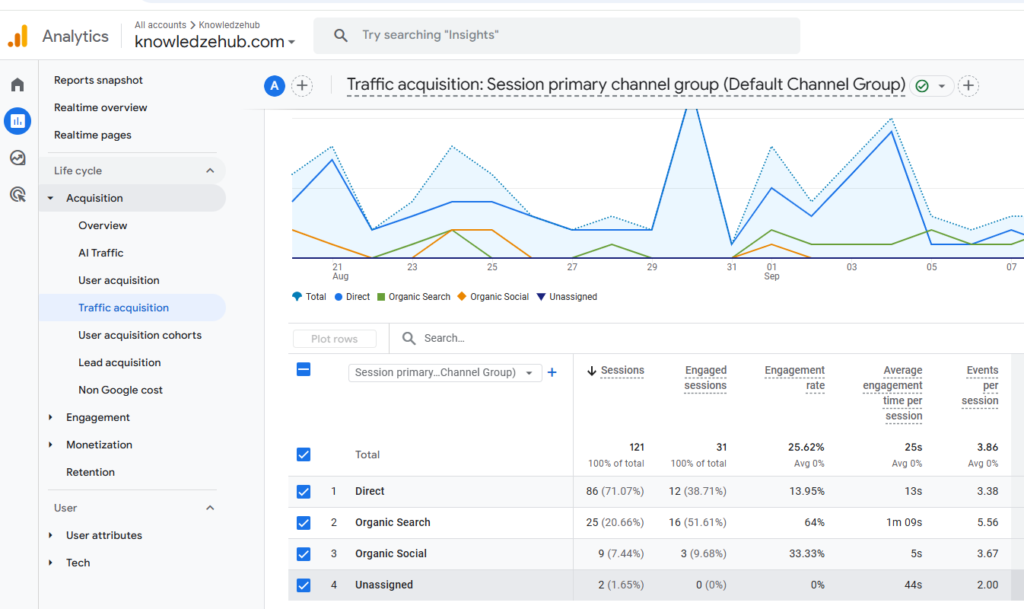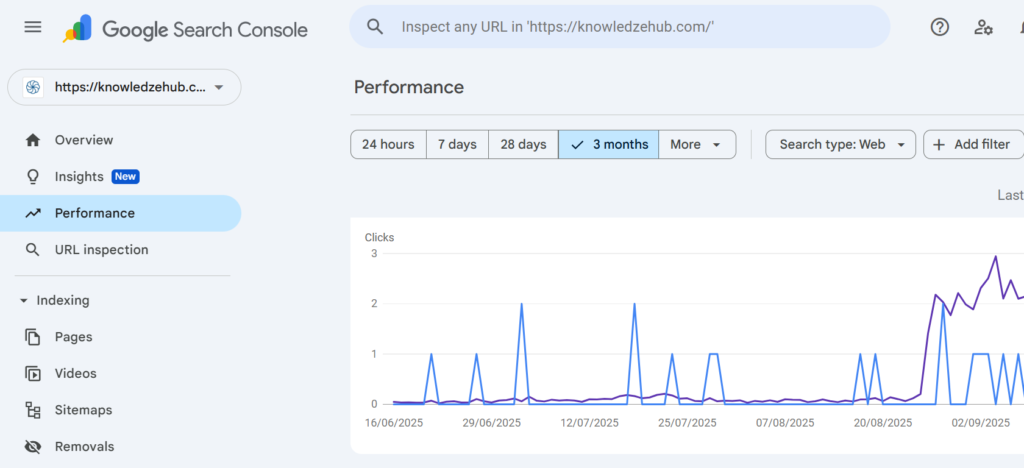If you want to master SEO in a practical way, nothing beats creating your own blog. A personal blog gives you the freedom to experiment, learn, and implement SEO strategies hands-on. Instead of just reading theory, you’ll understand how search engines work, how content ranks, and how to track your performance in real time.
This step-by-step guide will walk you through everything you need to know to set up your own blog specifically for SEO practice. From choosing the right platform to writing your first SEO-friendly post, we’ll cover it all in a beginner-friendly way.
✅ Step 1: Choose the Right Blogging Platform
Choosing the right platform is the foundation of your SEO blog. Here are the most common blogging platforms:
- WordPress – The most recommended option because it gives you full control over SEO settings, themes, and plugins.
- Blogger – Free and easy to use but with limited SEO flexibility.
- Medium – Great for reaching an existing audience but lacks customization and technical SEO control.
👉 For SEO practice, we strongly recommend using WordPress.org. It allows you to install SEO plugins, customize your theme, and handle technical settings like sitemap configuration.
| Platform | SEO Control | Ease of Use | Cost |
|---|---|---|---|
| WordPress.org | Full | Moderate | Low (hosting required) |
| Blogger | Limited | Easy | Free |
| Medium | Minimal | Easy | Free |
Pro Tip: Opt for WordPress.org if you’re serious about learning SEO because of its flexibility.
✅ Step 2: Select a Domain Name and Hosting
✅ Choosing a Domain Name
Your domain name should be:
- Short and memorable
- Reflect your blog’s niche
- Avoid numbers or hyphens
Example:
👉 good: seopracticeblog.com
👉 avoid: bestseo1234-example.com
✅ Selecting Hosting
Reliable hosting ensures your blog loads fast and stays online, which affects SEO rankings.
Recommended Hosting Providers:
- Bluehost
- SiteGround
- Hostinger
👉 Step-by-Step Process:
- Visit hosting provider’s website
- Select a hosting plan
- Register your domain name
- Complete the payment process
✅ Pro Tip:
Choose a hosting package with a free domain included to reduce costs as a beginner.
✅ Step 3: Install WordPress
WordPress makes it easy to manage your blog, and most hosting providers offer a one-click WordPress installation.
✅ Installation Steps:
- Log in to your hosting dashboard.
- Select “One-Click Install WordPress.”
- Enter your site name, admin username, and password.
- Complete the installation.
After installation:
- Change the default username “admin” to something unique.
- Install SSL for HTTPS – Google prefers secure websites.
✅ Step 4: Install Essential SEO Plugins
Plugins add SEO power to your blog. The top must-have plugins are:
- ✅ Yoast SEO or Rank Math
Helps you optimize each page and post for keywords, meta titles, descriptions, and more. - ✅ WP Super Cache or WP Rocket
Speeds up your blog by caching pages. - ✅ Smush
Optimizes images to improve page speed. - ✅ Google Site Kit
Connects your blog with Google Analytics and Search Console for performance tracking.
👉 Step-by-Step Plugin Installation:
- Go to WordPress Dashboard → Plugins → Add New
- Search for the plugin
- Install and activate
- Configure basic settings as per your goals
✅ Step 5: Design Your Blog – Choose a Theme
A clean, responsive theme improves both user experience and SEO performance.
Recommended Themes:
- Astra – Lightweight and fast
- GeneratePress – Simple and highly customizable
👉 Theme Setup Steps:
- Go to WordPress Dashboard → Appearance → Themes → Add New
- Search and install your chosen theme
- Customize colors, fonts, and layout
- Ensure the theme is mobile-friendly
✅ Pro Tip:
Focus on readability and fast loading speed over flashy designs.
✅ Step 6: Perform Keyword Research
Keyword research is the backbone of creating content that ranks.
✅ Tools You Can Use:
- Google Keyword Planner (free)
- Ubersuggest (limited free version)
- Ahrefs or SEMrush (if budget allows)
✅ Process Example:
- Enter a broad topic like “SEO tips.”
- Check related keywords and search volume.
- Filter by long-tail keywords with low competition.
👉 Example Target Keyword:
“How to do keyword research in 2025” – Informational post that matches search intent.
✅ Pro Tip:
Always consider the search intent:
- Informational → Tutorials
- Transactional → Product guides
- Navigational → Specific site searches
✅ Step 7: Write SEO-Friendly Blog Posts
An SEO-friendly blog post structure looks like this:
- Clear, descriptive title (with target keyword)
- Introduction that answers the user’s question
- Subheadings (H2, H3) breaking down content
- Naturally use keywords throughout the content
- Add images with descriptive alt text
- Internal and external links to valuable resources
- Meta title and description optimized via SEO plugin
👉 Example Post Structure:
- Title: “How to Perform Keyword Research – Step by Step Beginner’s Guide”
- H1: How to Perform Keyword Research
- H2: Why Keyword Research Is Important
- H3: Best Tools for Keyword Research
- H3: Step-by-Step Keyword Research Process
✅ Pro Tip:
Write for humans, not just for search engines. Always prioritize readability and value.
✅ Step 8: Optimize Technical SEO
Technical SEO improves your site’s visibility and user experience.
✅ Key Technical SEO Practices:
- Configure permalinks → WordPress Dashboard → Settings → Permalinks → Post name
- Install and submit an XML Sitemap to Google Search Console
- Test Mobile Responsiveness (Google Mobile-Friendly Test)
- Optimize site speed using PageSpeed Insights
- Enable HTTPS by installing SSL
👉 Common Technical Issues to Fix:
- Broken links
- Duplicate content
- 404 errors
✅ Pro Tip:
Use Google Search Console to monitor technical SEO errors regularly.
✅ Step 9: Publish Your First Blog Post
✅ Step-by-Step Publishing Process:
- Go to WordPress Dashboard → Posts → Add New
- Enter the blog title (optimized with a keyword)
- Write the content using headings and images
- Set meta title & description in SEO plugin
- Preview the post
- Publish
👉 Example First Blog Topic:
“How to Perform Keyword Research – Step by Step Beginner’s Guide”
✅ Pro Tip:
Ensure your first post provides actionable value and answers the most common beginner questions.
✅ Step 10: Promote Your Blog
Publishing content isn’t enough. Promotion drives traffic and helps your blog rank.
✅ Promotion Strategies:
- Share on Social Media (Twitter, LinkedIn, Facebook)
- Post in Online Communities (Reddit, Quora)
- Write Guest Posts to Build Backlinks
- Network with Other Bloggers
- Use Email Marketing
👉 Tools to Help Promote:
- Buffer (for scheduling social posts)
- Mailchimp (for email campaigns)
✅ Pro Tip:
Consistent promotion helps you gain visibility faster.
✅ Step 11: Monitor SEO Performance
Use free tools to track your blog’s performance and improve over time.
✅ Google Analytics Metrics to Watch:

- Organic traffic
- Bounce rate
- Average session duration
✅ Google Search Console Data:

- Index coverage
- Impressions and clicks
- Mobile usability issues
✅ Pro Tip:
Check Google Search Console regularly to monitor how your blog is indexed and identify issues.
✅ Step 12: Continuous Improvement
SEO is never a one-time job. Keep improving by:
- Updating old content
- Testing different headlines
- Monitoring keyword rankings
- Optimizing page speed
- Fixing broken links
✅ Pro Tip:
Use data from Analytics to identify low-performing pages and improve them.
✅ Conclusion
Creating your own blog for SEO practice is one of the best learning strategies.
By setting up your blog, performing keyword research, writing SEO-friendly content, and optimizing it technically, you’ll gain real-world experience that no online course can teach.
✅ FAQ on How to Create Blog
Q1: Do I need to pay for a domain and hosting to practice SEO?
A1: While free platforms exist, paid domain and hosting give full SEO control and flexibility.
Q2: How long will it take to rank my blog?
A2: Typically, 3–6 months of consistent effort.
Q3: Can I use free themes for SEO practice?
A3: Yes, but lightweight themes are recommended for speed and performance.
Q4: Is keyword research really necessary?
A4: Yes, because targeting the right keywords attracts the right audience and helps rank better.



